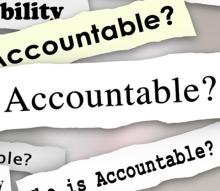Business cards are a valuable tool in the professional community. The art of the business card is one that allows you to leave a lasting memory with a new connection.
Here at the NIH, fellows often talk about the challenges in getting business cards. Don’t let that stop you though. Making your own is not difficult. You can use a good quality paper and template from Avery (with a laser printer), the R&W business card services, or online vendors such as VistaPrint or others (I even found one that had science images by using Google). One thing, don’t use glossy paper, people like to write on business cards and the gloss prevents that. Your personal investment in this networking tool will be anywhere from $10 to $40, not bad for about 500 cards!
The second question we often hear is: what should it look like? Pick up a few cards and see what you like. What font do they use? How large is their name? When you add your title make sure it is something that everyone will understand, for example write postdoctoral fellow instead of IRTA fellow. Your contact information should be something that you will actually use, a personal email and phone are fine. A street address is not as critical these days, and it is your choice whether to add that. We have started to see urls to personal, albeit professional, websites and LinkedIn profiles.
One of the best cards I have seen recently was from a postdoc who used an image of her work. It was a terrific conversation starter as she described her research interests and how that figure was a key piece of data in solving a scientific mystery.
Now that you have the cards, what do you do with them? There are typically two methods of exchanging cards. When you are in a meeting with people you do not know cards are often exchanged in the beginning of the meeting. Once you sit down, line the cards up in front of you in the order that people are seated. This way you can address people by their name. In large networking events cards are usually given after the conversation starts to lead somewhere. You can definitely lead the card exchange by saying, “This is a terrific conversation and I would like to follow up with you, do you have a card?”
Here are a couple of other tips; keep them protected, the last thing you want to do is hand out a card that looks like it has been chewed on. Replenish your stash of cards often so you are not caught without them. Use the two pocket rule, have your cards in one pocket and the cards you collect in another pocket, then you avoid the embarrassing mishap of handing out another’s card as your own. Also, if you have a plastic name badge holder it is a fantastic place to store cards if you are lacking pockets.
Any tips on business cards you would like to share??




